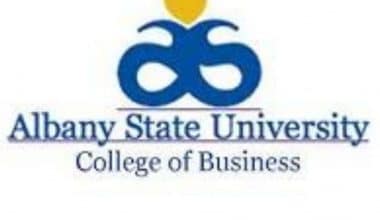Berkeley vs Stanford University- which is your dream school?
Stanford University and the University of California Berkeley are two very prestigious universities in the USA. Getting admission to any one of them is a matter of pride, especially for international students.
In this post, we will place these two schools side by side using key points. These points will differentiate both schools for you. So, if you have been considering applying to either of the schools, you might want to first take a look at this article.
Table of contents
Why the University of California Berkeley?
There is almost no basis for the Berkeley vs Stanford debate if you don’t know why you should attend any of these colleges. So, here’s a little background about UC Berkeley that may convince you to attend the University.
The University of California, Berkeley (UC Berkeley)is a public land-grant research university in Berkeley, California. Established in 1868 as the state’s first land-grant university.
Berkeley is ranked among the world’s top universities by major educational publications. The university hosts many leading research institutes, including the Mathematical Sciences Research Institute and the Space Sciences Laboratory.
So, you should consider Berkeley if you fancy yourself making great exploits in the world.
Why Stanford University?
Stanford University, officially Leland Stanford Junior University, is a private research university located in Stanford, California. Stanford was founded in 1885 by Leland and Jane Stanford in memory of their only child, Leland Stanford Jr.
According to wikipedia.org, Stanford is the alma mater of one president of the United States (Herbert Hoover), 74 living billionaires, and 17 astronauts. It is also one of the leading producers of Fulbright Scholars, Marshall Scholars, Rhodes Scholars, and members of the United States Congress.
With the long list of very influential alumni from Stanford, you can also make your dream of becoming a world figure blossom to life by attending Stanford University.
Berkeley vs Stanford University– Similarities
There is a list of features common to Berkeley and Stanford University which sets them apart from other universities in the US.
Here are the major similarities between Berkeley and Stanford University.
- They are both the oldest universities in the US that are still running to date and have educated a large portion of America’s most prominent people
- Berkeley and Stanford’s ranks are very high in cross-subject UK university rankings. However, their entrance is very competitive.
- Both universities approach undergraduate admissions in the same way. If you wish to apply to either Berkeley or Stanford, you must submit your application three months earlier than other universities in the US application timeline.
Berkeley vs Stanford University
So, back to the battleground, which university would you choose between Berkeley and Stanford?
We will not tell you which you should attend, but we will give you their differences. Through the 10 differences which we provide you below, you’ll be able to make your decision.
Here are the ten (7) points through which we will discuss Berkeley vs Stanford:
- Location and weather
- Size
- Academics
- Application Requirements
- Accommodation
- Financial Aid
- Athletics and Sports
#1. Location and weather
Location plays a very vital role in determining if you’ll attend a particular college. Is the college in an Urban or Rural area? What is the lifestyle of the people there? How close is the school’s campus to the housing facilities?
Located in the California Bay Area, Berkeley is a quirky small city with major metropolitan cities such as San Francisco and Oakland. Its location allows students to enjoy all the advantages of a big city, including its artistic, gastronomic, and cultural centers while offering the opportunity to retreat to quieter spaces. The climate in Berkeley is very similar to the city itself: diverse, with four seasons and a generally mild climate.
Just 40 miles away, across the bay, is Stanford. If you compare Stanford to UC Berkeley, Stanford is much more autonomous, with a campus that often feels like a city in its own right. The campus is home to two museums, an “arts district” and a variety of live performances. Stanford is in the heart of Silicon Valley and, like Berkeley, has four seasons, including an equally mild climate.
#2. Size
UC Berkeley is home to 31,348 students2 and 11,856 graduates, for a total enrollment of 43,204 students. The student-to-faculty ratio at UC Berkeley is 19: 1 and 52.9% of classes have less than 20 students.
One of the main differences between Stanford and UC Berkeley is the size of the student group. Stanford’s total enrollment is just 20,102 undergraduates: 6,994 undergraduates and 9,310 graduate and professional students. Another notable difference is the size of the class; Stanford has an impressive 5: 1 student-to-teacher ratio and nearly 70% of its classes have fewer than 20 students.
#3. Academics
UC Berkeley offers 150 majors and undergraduate minors at its five colleges and one school. Those universities and schools are:
- College of Letters and Science
- College of Chemistry
- College of Engineering
- College of Environmental Design
- College of Natural Resources
- Haas School of Business
UC Berkeley offers 150 undergraduate majors and minors and is regarded for its cutting-edge programs, including electrical engineering and computer science, molecular and cell biology, and economics, along with its well-regarded business classes.
Stanford is noted for its seven schools and contiguous campus which creates a multidisciplinary learning environment. Its seven schools are:
- The Graduate School of Business
- School of Earth, Energy & Environmental Sciences
- Graduate School of Education
- School of Engineering
- School of Humanities & Sciences
- School of Law
- School of Medicine
#4. Application Requirements
Berkeley
- LORs (usually three);
- SOP;
- Resume;
- Test Scores (such as TOEFL, IELTS, SAT, GRE, etc.)
Stanford University
- Supplemental Form (for a few programs);
- LORs & SOPs;
- Essays;
- Portfolio (required for a few programs)
#5. Accommodation
UC Berkeley students have the freedom to choose where they want to live, whether on campus in a high-rise dormitory, apartment-style, or off-campus. The school also offers a handful of themed accommodation options, including cultural and specialty homes.
Freshmen make up the majority of students living on campus. About 95% of freshmen live on the UC Berkeley campus, although only about 27% of the total student population lives on campus.
Housing is another place where the two schools diverge when comparing Stanford to UC Berkeley. Unlike UC Berkeley, Stanford freshmen have to live on campus and most students stay there; 97% of Stanford students live on campus, where housing is guaranteed for four years.
#6. Financial Aid
The cost of attending these schools is very different, especially if you are a California resident. For students in the state, UC Berkeley is about half the price of Stanford. About two-thirds of Berkeley students are eligible for financial aid.
The median cumulative debt for senior graduates is $ 18,225, which isn’t bad for a school that ranks 29th nationally in Payscale 29th place in terms of salaries my graduates earn. Eligible California residents are eligible for the University of California Blue and Gold Opportunity Plan, which allows students from families with annual incomes less than $ 80,000 not to pay tuition after scholarships and grants.
At Stanford, about 47% of students get help when needed, and the school awards an average of $ 52,030. Stanford itself provides assistance to approximately 58% of students and 47% of students receive assistance on the basis of need; the average need-based scholarship or scholarship is $ 54,400. Even if you need to fund some of Stanford’s education, it’s a great investment – US News ranked Stanford sixth in the country for colleges with the best return on investment.
#7. Sports and extracurricular activities
UC Berkeley and Stanford play in the Division I Pac-12 conference and while both are known more for academics than track and field, they each have a well-decorated athletic history. Because the schools are so close and high, there is a friendly rivalry between the two schools; their annual soccer game is known as the “Great Game”.
Internationally, alumni and students from both schools excel in athletics. Stanford alumni have won more Olympic medals than almost any other school (with 307 medals, just two behind USC’s 309), while UC Berkeley is fourth on the list with 207 medals won.
At home, Stanford has won a record of 123 NCAA championships and 149 national titles overall, while UC Berkeley has won 97 national team titles and 312 combined championships across the team and individual sporting events.
Greek life is also rife at both UC Berkeley and Stanford. About 3,600 students – about 12% of students are members of one of the more than 60 fraternities and sororities on the UC Berkeley campus, compared to about a quarter of Stanford students. Nine fraternities and sororities currently reside on the Stanford campus and the university recognizes 30 Greek organizations.
Tuition Fees: Berkeley vs Stanford University, which one is Cheaper?
UC Berkeley’s Local tuition is 14,253 USD and Domestic tuition is 44,007 USD. On the other hand, Stanford University tuition is 53,529 USD.
Berkeley vs Stanford University- Notable Alumni
Berkeley
Berkeley alumni, faculty, and staff have distinguished themselves in a wide range of endeavors and include Nobel laureates, Turing Award winners, Fields Medalists, Wolf Prize winners, Academy Award winners, heads of state, state governors, billionaires, and the founders or co-founders of many world-renowned companies.
- Earl Warren, BA 1912, JD 1914, 14th Chief Justice of the United States, 30th Governor of California
- Steven Chu, PhD 1976, Nobel laureate and former United States Secretary of Energy
- Jennifer Granholm, BA 1984, First female Governor of Michigan and U.S. Secretary of Energy
- Zulfikar Ali Bhutto, BA 1950,[212] 4th President of Pakistan, 9th Prime Minister of Pakistan
- Robert Reich, Professor of Public Policy, 22nd United States Secretary of Labor
- Christina Romer, Professor of Economics, 25th Chairperson of the President’s Council of Economic Advisers
- Steve Wozniak, BS 1986, co-founder of Apple Inc.
- Gordon Moore, BS 1950, cofounder of semiconductor company Intel
- Eric Schmidt, MS 1979, PhD 1982, Executive Chairman of Alphabet
- Edmund Gerald “Jerry” Brown, Jr, BA 1961, Governor of California, former California Attorney General
- Gregory Peck, BA 1939, Academy Award-winning actor
- Natalie Coughlin, BA 2005, multiple gold medal-winning Olympic swimmer
- Haakon Magnus, Crown Prince of Norway, BA 1999[213]
- Robert McNamara, BA 1937, President of World Bank (1968–81), United States Secretary of Defense (1961–68), President of Ford Motor Company (1960)
- Daniel Kahneman, PhD 1961, awarded the 2002 Nobel Memorial Prize in Economics for his work in Prospect theory
- Harold Urey, PhD 1923, Nobel laureate and discoverer of deuterium
Stanford
Stanford alumni have started many companies and, according to Forbes, have produced the second-highest number of billionaires of all universities. Below is a list of some of the notable alumni of the school.
- Gretchen Carlson, broadcast journalist and former host of Fox & Friends (BA, 1990)
- Rachel Maddow, journalist and host of The Rachel Maddow Show (BA, 1994)
- Raymond Burr, Emmy Award-winning actor
- Reese Witherspoon, Academy Award-winning actress (Did not graduate)
- Jennifer Connelly, Academy Award-winning actress (Did not graduate)
- Sterling K. Brown, Emmy Award-winning actor (BA, 1998)
- Alexander Payne, Academy Award-winning film director (BA, 1983)
- Tiger Woods, golfer (Did not graduate)
- John Elway, former football quarterback and general manager of the Denver Broncos (BS, 1983)
- Herbert Hoover, 31st President of the United States (BA, 1895)
- Susan Rice, 27th United States Ambassador to the United Nations (BA, 1986)
- Julián Castro, 16th United States Secretary of Housing and Urban Development; former presidential candidate (BA, 1996)
- Sandra Day O’Connor, Former Associate Justice of the United States (BA, 1950)
- Anthony Kennedy, Former Associate Justice of the United States (LLB, 1961)
- Stephen Breyer, Associate Justice of the United States (BA, 1959)
- Dianne Feinstein, U.S. Senator from California and former Mayor of San Francisco (BA, 1955)
- Cory Booker, U.S. Senator from New Jersey; former presidential candidate (BA, 1991; MA, 1992)
- Mitt Romney, U.S. Senator from Utah, former Governor of Massachusetts, and former presidential candidate (Did not graduate)
- Jeff Merkley, U.S. Senator from Oregon (BA, 1979)
- Adam Schiff, U.S. Representative from California (BA, 1982)
- Philippe of Belgium, 7th King of the Belgians (MA, 1985)
- Yukio Hatoyama, 93rd Prime Minister of Japan (PhD, 1976)
- Rishi Sunak, British politician and Chancellor of the Exchequer (MBA, 2006)
- Sally Ride, astronaut, and physicist; first U.S. woman in space (MS, 1975; PhD, 1978)
- Tom Steyer, billionaire hedge fund manager and former presidential candidate (MBA, 1983)
- Carly Fiorina, CEO of Hewlett-Packard, former presidential candidate (BA, 1976)
- Mukesh Ambani, billionaire business magnate and chairman of Reliance Industries (Did not graduate)
- Peter Thiel, billionaire venture capitalist and co-founder of PayPal (BA, 1989; JD, 1992)
- Larry Page, co-founder and former CEO of Google (MS, 1997)
- Jerry Yang, co-founder, and CEO of Yahoo! (BS, MS, 1990)
- Elon Musk, the billionaire founder and CEO of Tesla and SpaceX
- Reed Hastings, co-founder, and CEO of Netflix (MS 1988)
- Sam Harris, author and public intellectual (BA, 2000)
Conclusion
Berkeley and Stanford University are undoubtedly one of the best universities to attend in the US. However, they are very competitive universities that don’t allow students to apply to them in the same academic cycle. So, choose which you will apply for come October.
To aid your decision, however, weigh both universities based on their world ranking, subject strength, alumni network, employability, and even their extra-curricular activities. We believe that this Berkeley vs Stanford battle of ours which you’ve just read will guide you to select the best for your career development.
References
- wikipedia.org– University of California, Berkeley
- wikipedia.org– Stanford University
- blog.collegevine.com– UC Berkeley vs. Stanford: Which College is Right for You?
Recommendations
- Cambridge vs Oxford: 10 Differences Why I Should Choose One
- Yonsei University Reviews: Admission, Acceptance rate, Cost, Program & Ranking
- Remington College: Admission, Programs, Tuition, Ranking, and Scholarships
- Monash University Review: Admission, Acceptance rate, Cost, Program
- Delft University of Technology Review: Admission, Acceptance rate, Cost, Program
- Bellevue University: Admission, Programs, Tuition, Ranking, Scholarships





